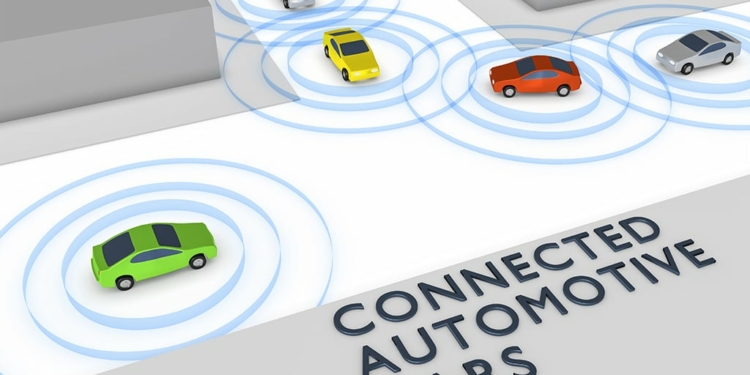Source: EDN article
by Brian Santo. The transition to 5G will happen, but it looks like it is going to take many more years than one might have assumed after listening to years’ worth of 5G hype. Part of the reason is that the business models for some of the applications that were expected to drive 5G demand are not coming together. Worse, from the communications industry’s perspective, some are coming together, but without 5G as a necessity. The development of autonomous vehicles (AV) is falling into that latter category, according to a variety of automotive industry participants at the CES 2019 show in Las Vegas.
Hyundai Motor Co. senior vice president Jungsik Suh talked about “transcending” connectivity at a press conference here early in the week. He said each vehicle will become its own cloud and all vehicles together become “a large cloud data center.”
John Suh, the director of Hyundai’s Cradle (Center for Robotic Augmented Design in Living Experience) venture capital / R&D arm, said the company is investigating ways to reduce its reliance on edge computing. Based on the commentary from the two execs, it appears Hyundai is exploring relying more on vehicle-to-vehicle (V2V) communication than on anyone else’s wireless networks.
In a session on 5G supporting edge computing, AVs were mentioned, but other applications inspired more detailed examination from the speakers, and possibly more excitement. Craig Farrell, IBM VP and CTO of the company’s global telecom industry unit, mentioned AVs, but touted the value of caching popular video at the edge, of localized ad insertion, of supporting smart medical devices such as asthma inhalers, and of supporting augmented and virtual reality (AR/VR) and gaming.
In a session called “The Future of Connected Cars with 5G,” panelists were confident 5G will happen, but not in the next few years. Panelists agreed that the type of global coverage that would be useful to support autonomous driving is still lacking in 4G, and that since 5G will require far more base stations, it is unreasonable to rely completely on 5G connectivity.
“5G will happen,” said BlackBerry Certicom vice president Jim Alfred. “How it will happen and who it will benefit is all up in the air. When do we get it, and what does it mean? Up in the air. Some applications do not require 5G.”
5G has inherent and legitimate promise for enabling new use cases based on new performance characteristics that include faster data rates and lower latency. One of the marquee use cases for 5G based on its low-latency capabilities was going to be supporting autonomous vehicles, but auto makers, their suppliers, and their technology partners here at CES are clearly not basing their plans for vehicle autonomy on the availability of 5G coverage.
There are a lot of moving parts here, and they’re not synchronized. There is vehicle technology, there’s communications technology, and there are marketing considerations. Auto makers are continuously reevaluating the relative importance of assisted driving (Levels 1, 2, and 3) and autonomous driving (Levels 4 and 5) against what the market needs and wants.
At a more fundamental technological level, safe autonomous driving will require significant computing resources. As generally conceived, it will require more computing resources than it will be economical to build into AVs. Offloading to data centers is impractical; distance is time, expressed as network latency. Too much latency (the commonly cited maximum is 20 milliseconds) is intolerable when supporting AVs that need to react in real time.
That’s an argument for using 5G in low-latency mode. It is also the argument for pushing more processing to the network edge. But if the processing is already at the network edge, do you still need 5G, given that 4G is already there – and, more to the point – 5G isn’t there yet?
5G networks, as such, still barely exist. T-Mobile has decided to wait until 2020. In mid-2018, Verizon started installing non-standard 5G equipment it’s going to have to either upgrade or perhaps even replace entirely (moving forward its 5G deployments will conform to standards), in order to provide fixed wireless broadband. AT&T originally was going to start with fixed wireless broadband also, but decided against it because the business model wasn’t working out, which inevitably undermined Verizon. At the end of 2018, AT&T turned on a 4G mobile telephony service augmented with 5G technologies, an approach it’s been calling 5G Evolution (5G E for short), which many people pointed out – accurately – isn’t 5G. Earlier this week, Verizon complained about misleading 5G hype, T-Mobile piled on calling out AT&T by name, and the three continued sniping at each other for a bit.
Supporting AVs was going to be a major use case, and that use case was going to help wireless network companies monetize their networks, but AVs won’t be around for years. That’s a chicken-and-egg situation. But now that auto makers are questioning whether they even need 5G, or how badly they need it, it’s possible the chicken-and-egg situation might be mooted entirely.
Some auto makers that were founded in the last few years as electric vehicle (EV) companies seem to believe they can get to Level 4 and Level 5 autonomy within the next few years. Most traditional auto makers believe that L4/L5 AVs won’t start appearing before the 2024 model year at the earliest, however, and many allow the first such vehicles won’t be marketed until much later than that.
On the one hand, the newer EV companies can be more nimble (which they boast about). On the other hand, the traditional companies have considerably more experience dealing with safety standards around the world, and they (and many of their suppliers) say there is still an enormous amount of work to do to assure that AVs will be safe. Security is a separate issue, one that also requires a lot of work yet to assure.






























